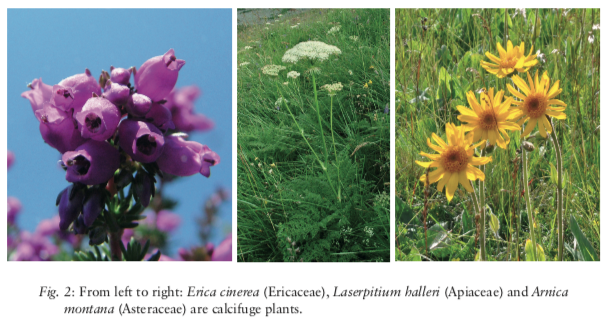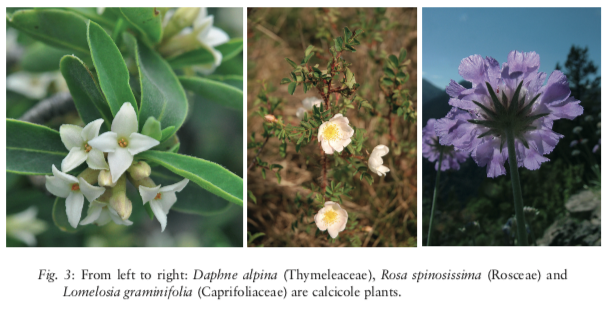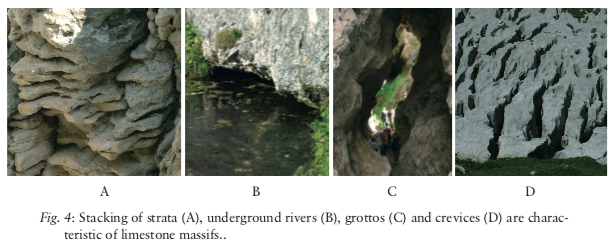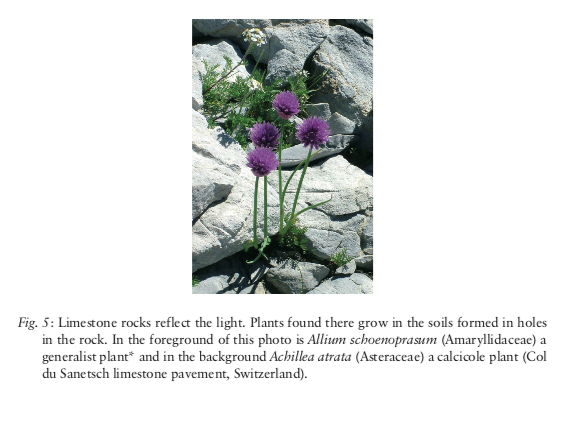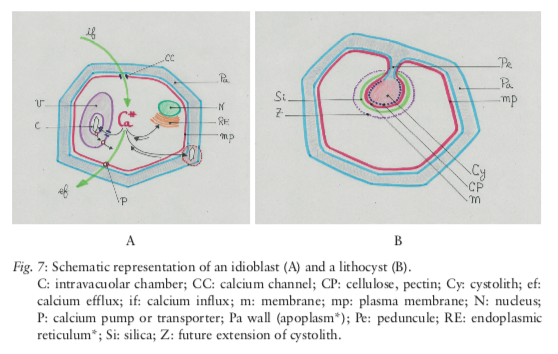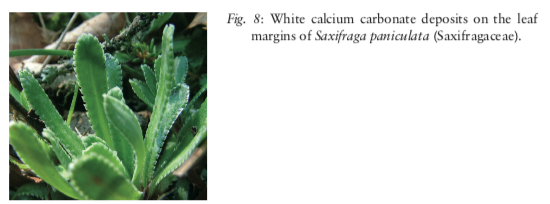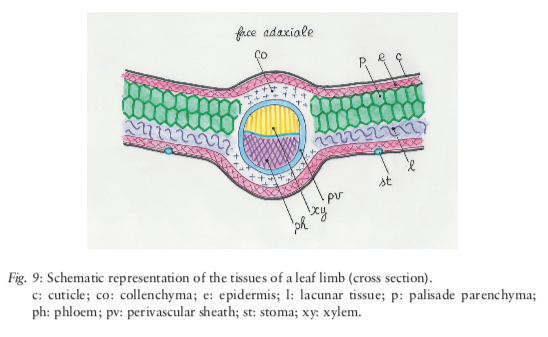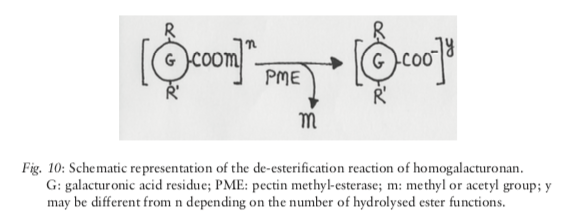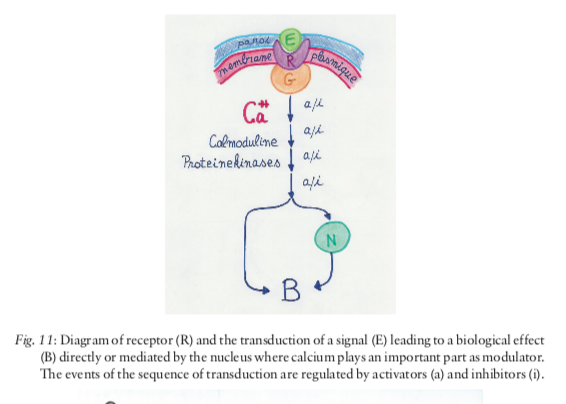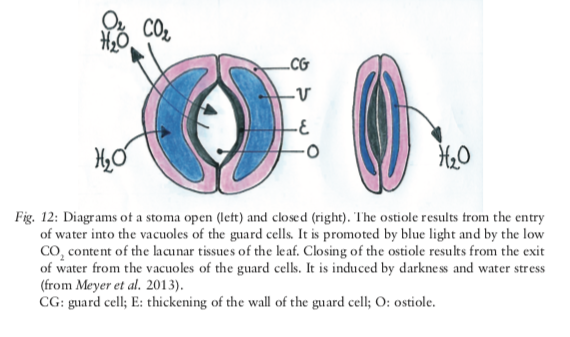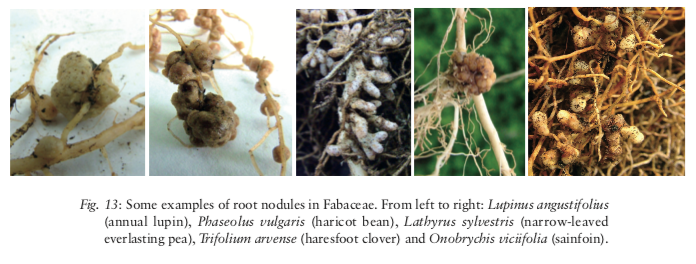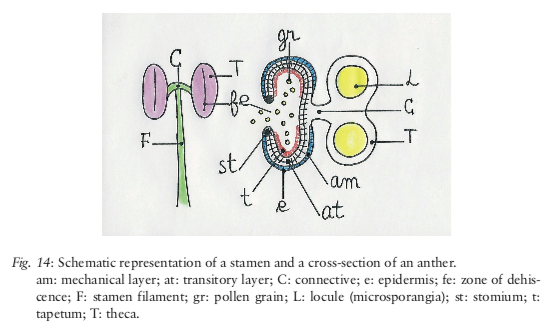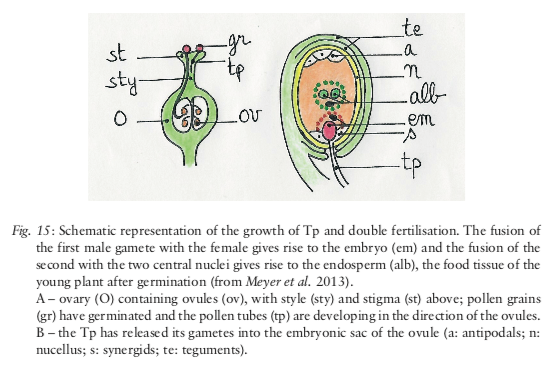Limestone and Calcium in Plants
Artikelreferenz exportieren
- Klartext
- BibTeX
- RIS Format
- Downloadkosten : € 6.00
Zusammenfassung:
Diese Arbeit gibt einen Überblick über die physiologische, ökologische und klimatische Bedeutung von Kalk und Kalzium in Pflanzen. Kalk ist ein biogenes Gestein, eine mineralische Form von Kohlenstoff, die sich auf der Oberfläche der Erdkruste ablagert. Durch Erosion kann gelöster Kalk biologisch aktiv werden. Pflanzen sind an den polaren Prozessen zwischen aktivem und inertem Kalzium beteiligt (Bio-Mineralisation in vivo und Karbonisation post mortem). Die Einflüsse von bodenbedingten, biologischen und klimatischen Gegebenheiten auf die vielfältigen Lebensräume von generalistischen, kalkliebenden und kalkmeidenden Pflanzen werden kurz beschrieben, ebenso die Rolle von Kalk- oder Kieseldüngung. In der Pflanze hält das Oszillieren von Calcium zwischen aktiv löslicher und inaktiv gebundener Form die zelluläre Konzentration in den engen Grenzen zwischen Mangel und Toxizität. Kalziumoxalat-Kristalle ermöglichen es der Pflanze, biotischen und abiotischen Herausforderungen zu widerstehen und die Nutzung des einfallenden Lichts zu optimieren. Aktives Kalzium ist an Konsolidierungsphänomenen beteiligt, indem es bei der Versteifung der Zellwand als Vernetzungsmittel des Pektins und bei Signal-Transduktionsmechanismen während des Wachstums der Wurzelhärchen oder des Pollenschlauchs wirkt. Es ist für die Bewegungen von Spaltöffnungen unverzichtbar. Zuviel Kalzium im Kulturmedium verhindert die Keimung des Samens. Die Rolle der Kalziumsignale ist in den biochemischen Dialogen zwischen Pflanze und Rhizobium für die Bildung von Wurzelknöllchen zur biologischen Stickstofffixierung von grosser Bedeutung. Diese Daten werden mit den von Steiner beschriebenen phänomenologischen und anthroposophischen Befunden verglichen, vor allem bezüglich der Herkunft des Kalkes, seiner Rolle bei der Entstehung der Urtiere und der Bildung von Exoskeletten (Mollusken) oder ähnlichen Strukturen (Verfestigung der pflanzlichen Zellwand) oder Endoskeletten (Wirbeltiere). Kalkstein ist lebensfeindlich, aber paradoxerweise schützen seine festen Strukturen das Leben. Kalk, ein inertes Mineral, liegt zwischen einer vergangenen und einer zukünftigen Lebensform. Seine Bedeutung bei den Prozessen der sexuellen Fortpflanzung und der Samenbildung wird in Verbindung mit den Kräften der untersonnigen Planeten betrachtet.

